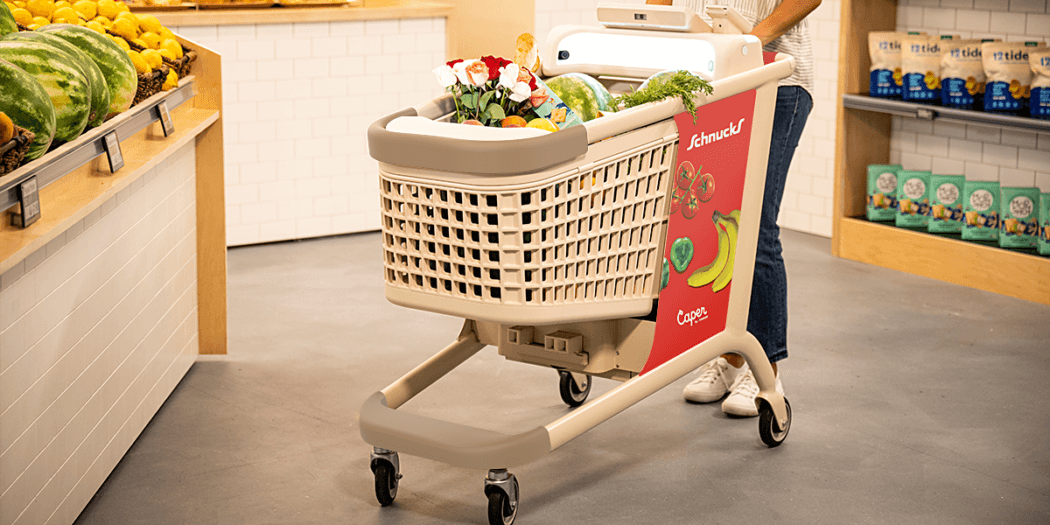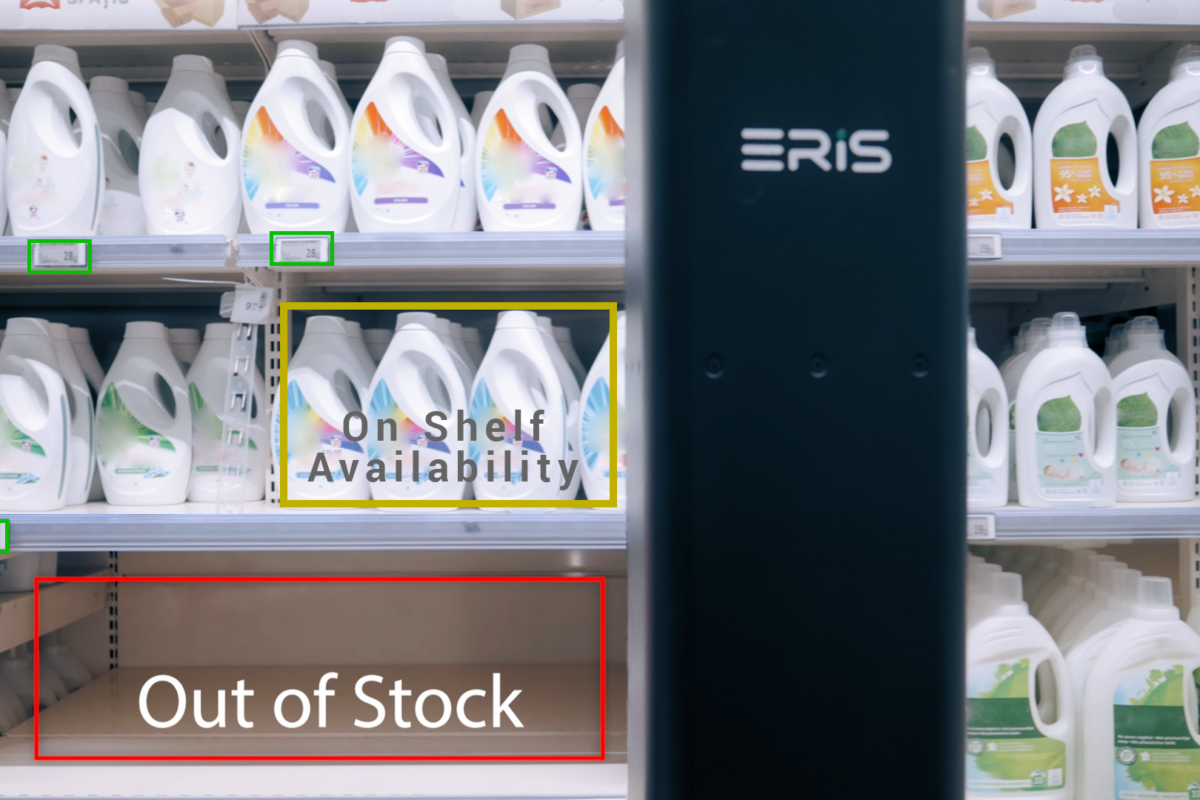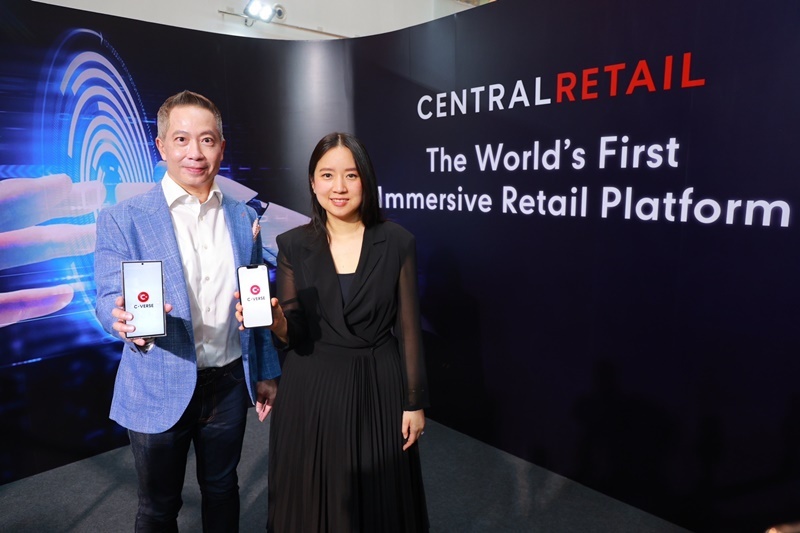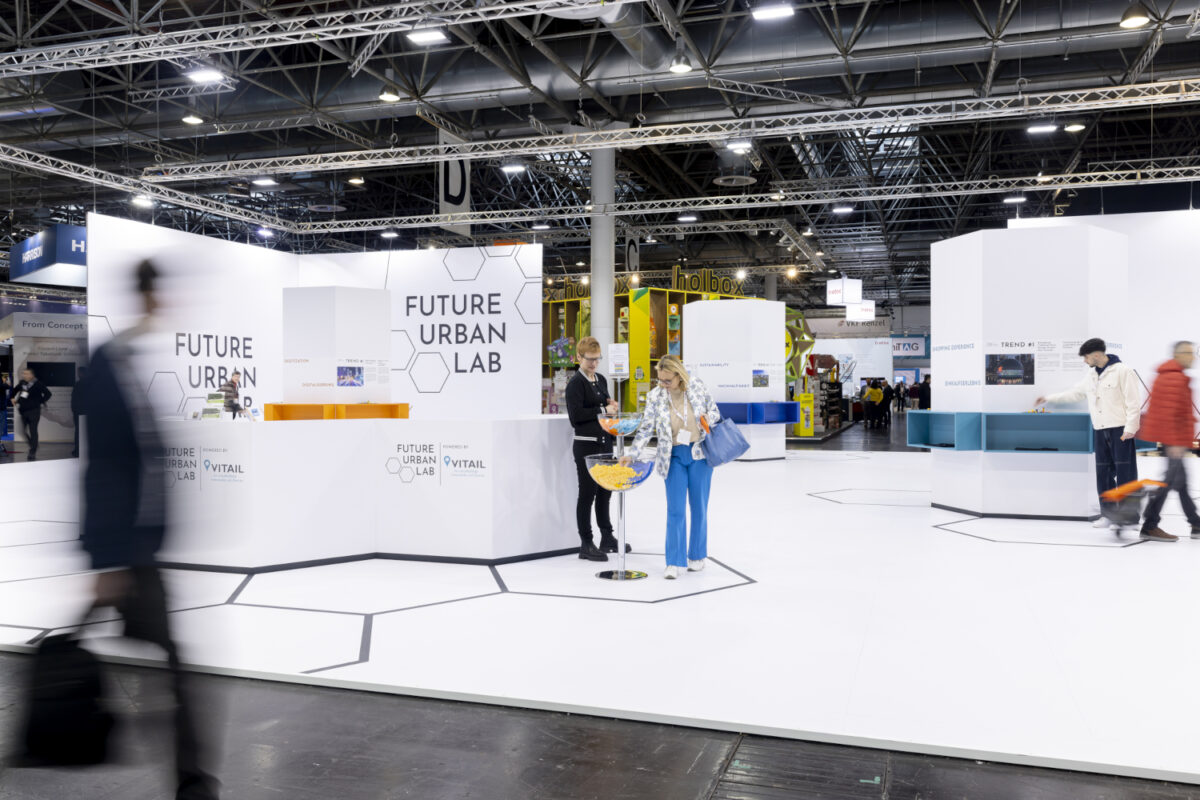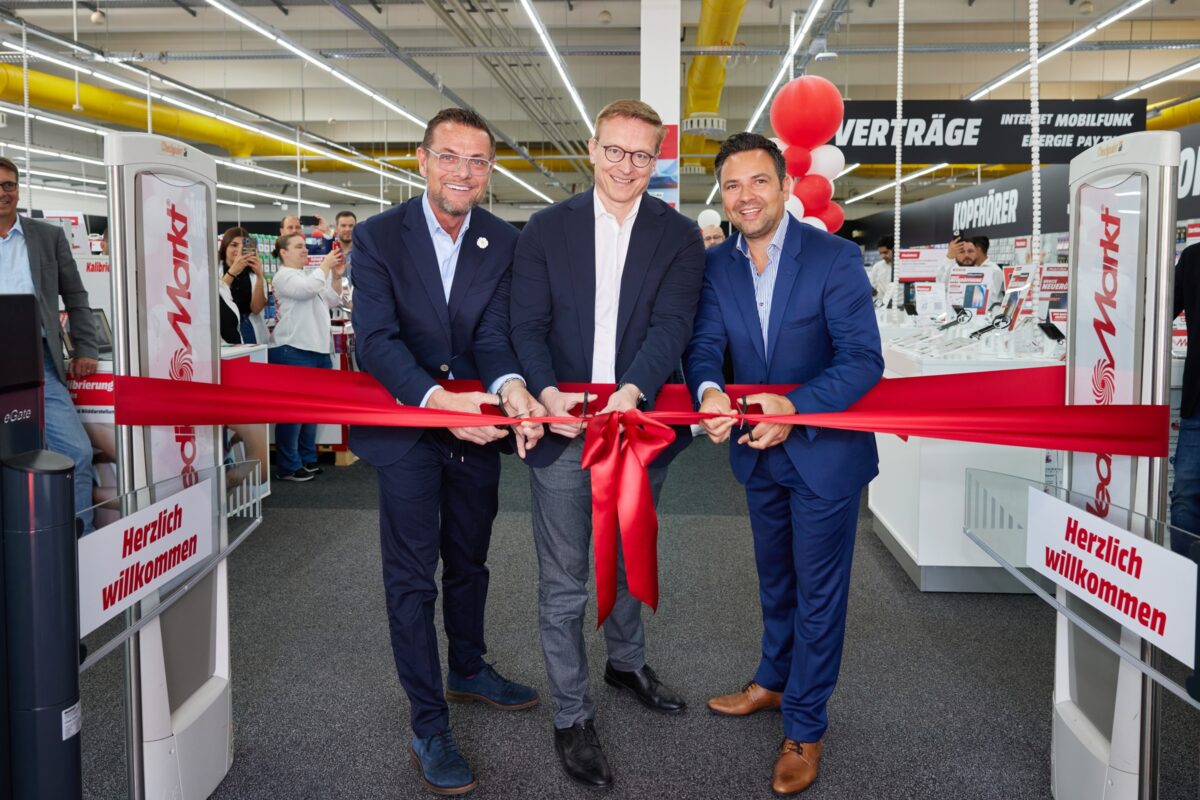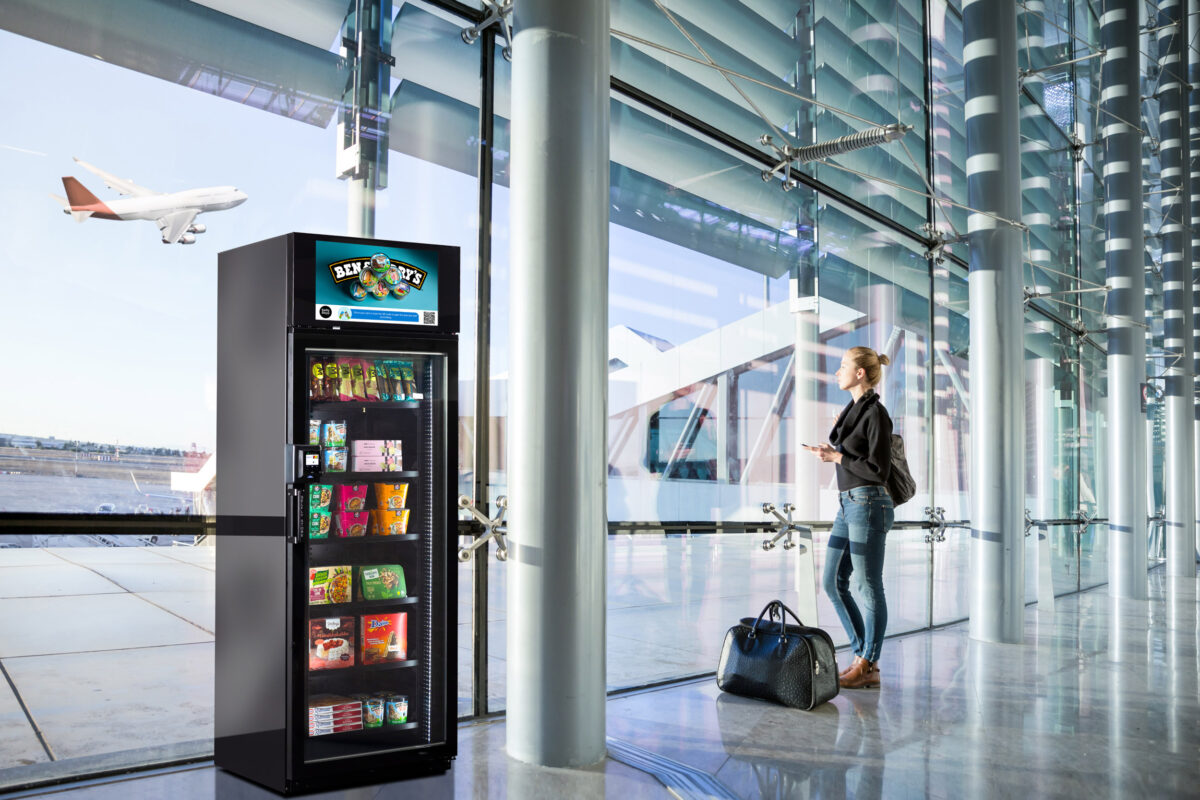How the industry can power a sustainable and digital future
by Katja Laska (exclusively for EuroShop.mag)
Do digitalization and sustainability go together? Xenia Giese says the two actually go hand in hand. She is Industry Executive Retail & Consumer Goods at Microsoft and co-author of the Microsoft/EHI white paper titled “Sustainable Smart Stores 2021 – Digital Sustainability Solutions for Retail” (in German).
In this exclusive interview, she explains why the two aspects can be combined and work well together, describes how smart stores promote sustainability and reveals why the future of this issue is in good hands with the industry.
Ms. Giese, what are the top trends in the retail industry?

Xenia Giese, Industrie Executive Retail and Consumer Goods, Microsoft //©Microsoft
Xenia Giese: The coronavirus pandemic has given an extra boost to German retail dynamics and accelerated the shift towards digitalization. Digital solutions are at the top of the industry’s agenda. Many retailers already rely on digital solutions in their ‘smart stores‘, whose operation is based on sensor technology, the Internet of Things and AI-supported applications. Needless to say, these types of stores are more energy-intensive than shops that do not or barely leverage digital technologies. This has drastically increased the demand for ‘sustainable smart stores’, which feature digital solutions to improve operational efficiency and to offer more customer services, while simultaneously emphasizing a focus on sustainability.
How far has retail come on its way to the perfect ‘sustainable smart store’?
Many retailers certainly still have a long way to go on their journey to a sustainable smart store that uses innovative AI or IoT technologies to improve the sustainability profile. Yet there are very promising approaches and several great practical examples that show how digital solutions support modern retailers’ sustainability initiatives. Cloud computing can help lower carbon emissions, while numerous digital solutions for the strategic action fields offer many ways to achieve sustainability goals.
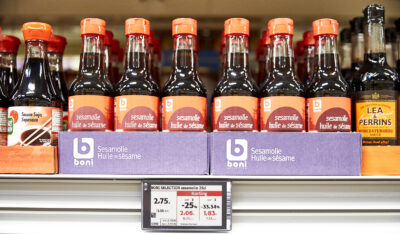
Stores: Colruyt is using SES-imagotag electronic price tags in 290 stores. This will replace 75 million paper-based price tags. In addition to increased process efficiency, this will save 90 tons of paper per year. // Copyright: Colruyt / SES-imagotag
In the white paper, you state, “Digitalization and sustainability scenarios are not contradictory and should go hand in hand.” How can these two aspects be reconciled and why is digitalization essential to achieve sustainable goals?
These digital solutions support energy efficiency and thus reduce energy-related carbon emissions, for example. Digital solutions are used to facilitate building and equipment control, including lighting control systems and energy-efficient lighting, solutions to optimize HVAC systems and heat and power generation.
Digital solutions also offer ways to directly optimize retail operations and make them more sustainable. They help manage waste, prevent losses and increase profitability through predictive maintenance and control of the refrigeration units, use sensors for in-store and warehouse inventory management and AI-based predictive optimization, thus avoiding excess inventory and out-of-stocks.
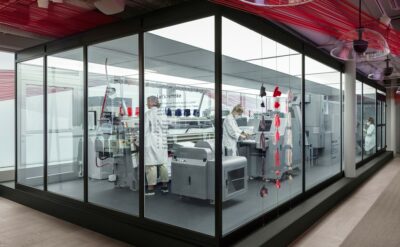
Customers & Circular Economy: To collect and return clothing donations, fashion retailer H&M uses a smart recycling bin with an interactive screen and integrated scales. Five million pounds (2.3 million kilograms) of recycled clothing could be collected in 2020 in the U.S. alone as a result. // ©H&M
What other retail areas can take sustainable action?
There is enormous untapped potential in the five relevant fields for sustainable action: head office, logistics & supply chain management, merchandise planning & production, stores, consumers & circular economy. Our latest white paper highlights 29 customer implementations, as well as 17 solutions by Microsoft and its partners.
The ‘classics’ are solutions that reduce retail energy consumption in stores. In food retail, this primarily pertains to optimizing refrigeration systems via predictive monitoring, and in non-food retail includes the optimization of lighting systems. More and more retailers in all sectors also use electronic price labeling since they optimize various in-store operations – along with making an important contribution to the sustainability profile by replacing printed price tags.
Innovative solutions offer far-reaching optimization potentials, which usually have positive effects on sustainability and core business processes. For example, the ‘Pictofit augmented reality (AR) engine by Reactive Reality’ creates a photorealistic custom avatar on the smartphone, offering a personalized customer experience that is designed to attract and retain customers thanks to virtual try-ons. The solution also reduces return rates since customer can virtually try on items with the right fit and dress size based on respective size and fit recommendations.

Headquarters: IKEA uses Microsoft 365 Teams for its 166,000 employees – reducing paper-based processes and replacing travel with digital collaboration. // ©Microsoft
Why and how is Microsoft committed to sustainability in retail?
As a multinational technology company, Microsoft is aware of its corporate environmental responsibility. Our mission is to empower every person and every organization on the planet to achieve more as we all help protect the Earth. Back in 2009, Microsoft first announced its goal to lower its carbon emissions. Over the past 10 years, the company has made significant investments to continuously improve its sustainability. Microsoft is collaborating with partners, researchers, and NGOs around the world to focus on the areas where we can have the greatest impact, which include carbon emissions, ecosystems, water, and waste. Our goals also include the retail sector and Microsoft is committed to being carbon negative, zero waste and water positive by 2030.

Supply chain & logistics: Intermarché monitors quality and traceability of its products with Transparency One through real-time supply chain data to identify product origin and reduce risks. In this way, sustainability criteria are met. // © Screenshot Youtube/ SGS Transparency One)
Which trends will shape the future of this issue?
To achieve optimal energy efficiency, it makes sense to run in-store digital solutions in the cloud. After all, Hyperscale cloud data centers can deliver significantly more performance per watt than on-premises data centers. The problem is that many stores are limited by bandwidth, making the comprehensive use of digital cloud solutions painful at best and often impossible. This makes things especially difficult when it comes to compute-intensive solutions such as IoT and sensor data processing. AI-powered forecasting solutions are often cloud-based. These cases would very quickly overwhelm the in-store bandwidth. Companies today are turning to cloud edge computing to solve this problem. This is the practice of processing data near the edge of the network where the data is being generated. Data is aggregated from the sensors to a dedicated device (also known as ‘appliance’). The AI platform prediction is transferred to the device and preset so that it is also available without a cloud connection. This means that the cloud connection is only needed for the initial AI training and for any changes, which significantly reduces the bandwidth need.
It is highly likely that technology-based retail energy management solutions will continue to rise in importance in the coming years, also thanks to a favorable political environment. Artificial intelligence technologies will probably also see rapid innovations and advancements, turning the concept of a sustainable smart store into a reality in the future.






